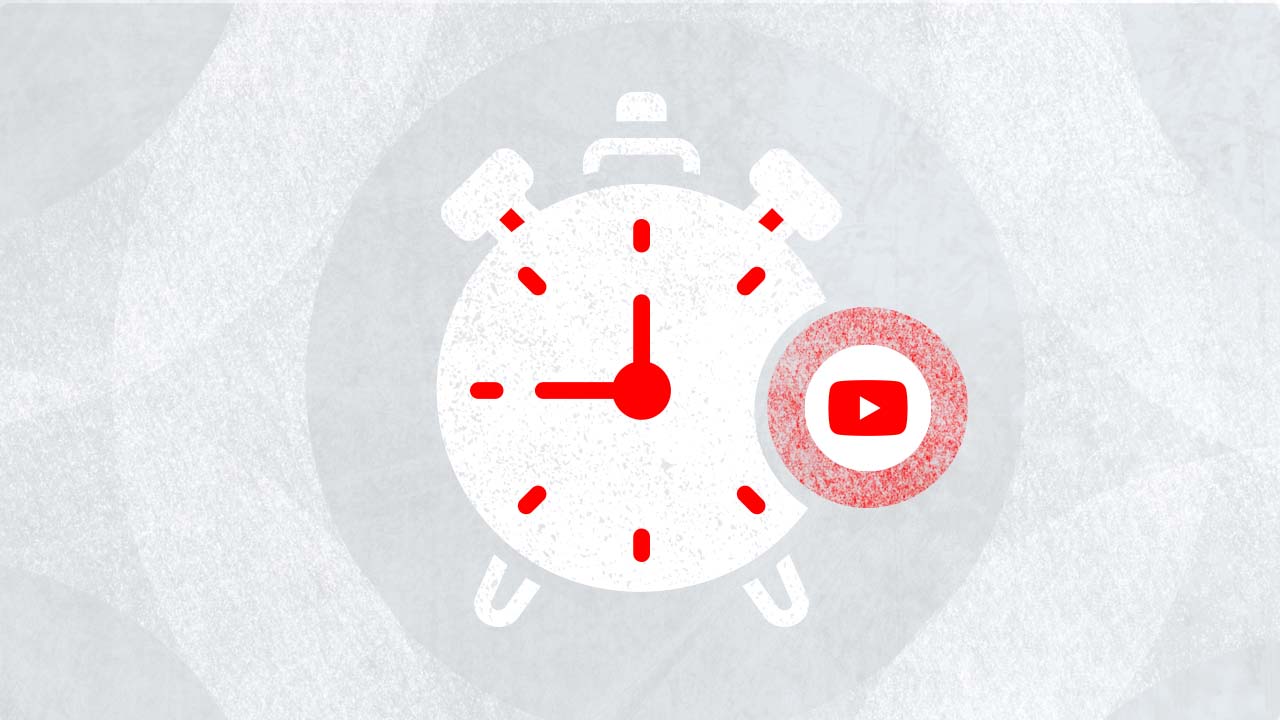If your YouTube growth has stagnated for a while and nothing seems to work, it's time to strategize. And, when brands like Sulwhasoo saw a 13.8x increase in conversion rate with a full-funnel YouTube strategy, there's no reason you can't leverage it. Even though your first try at it might make it seem complex, it's not. That's why we are here with a complete guide to YouTube Ads. Learn how you can make the most out of it!
What are YouTube Ads?
YouTube ads are promotions like other ads, but they are targeted based on customer interests, demographics, and behavior patterns. They are made with specific marketing objectives in mind to offer flexibility to the advertisers with their varied campaign goals.
Types of YouTube ads
1. Skippable In-Stream Ads

These ads come in between the video or, at times, before or after the video. You get the option to skip these videos after five seconds.
- Best for: These ads are best for building brand awareness and reaching a wider audience.
2. Non-Skippable In-Stream Ads

Non-skippable in-stream ads on YouTube appear before, during, or after videos and are designed to capture the audience's attention without the option to skip.

For example, in this Volkswagen ad, they created a non-skippable in-stream ad and, in the first five seconds, this ad itself skipped the ad for you. Isn't that something you'll be curious to wait for?
- Best used for: These ads are best when you want some impactful message to be spread and watched entirely.
3. In-Feed Video Ads

In-feed video ads on YouTube display in search results and feeds, featuring a thumbnail and headline to boost brand awareness and viewer engagement, adaptable for different screen orientations.
- Best used for: Increasing views and engagement and promoting video content among engaged viewers.
4. Bumper Ads

Bumper ads on YouTube are brief, 6-second, unskippable video formats designed to boost brand awareness and extend the reach of app campaigns. They offer a cost-effective solution for impactful messaging within a concise format.

For example, look how innovatively General Insurance used their first six seconds of the bumper ad to catch the attention with a tattoo mistake - showing that we all make mistakes but how we can always rely on insurance to fix that.
- Best used for: Creating a memorable brand message with campaigns and increasing brand awareness.
5. Outstream Ads

Outstream ads are designed for mobile and show on Google's video partner sites and apps. They offer flexible placement options like banners and in-feed, aiming to broaden video reach efficiently.
- Best used for: These ads are good for call to actions and for increasing your video's reach.
6. Masthead Ads

Masthead Ads on YouTube are ideal for achieving massive reach or awareness, especially effective for showcasing brands or services in a high-visibility area.
- Best used for: These ads are suitable for driving brand awareness and reaching more ideal audience groups.
Things To Consider While Choosing YouTube Ad Formats
Choosing the right YouTube ad format is crucial as the success of your ad depends on it. Check some of these key factors that you need to consider when you are selecting your ad format.
Campaign Objectives
Your camping goals should always match with your ad format:
-
Brand awareness: If you intend to boost brand awareness, then skippable in-stream ads and bumper ads are the most effective ones. They reach a wide audience.
-
Lead generation: Overlay ads and non-skippable in-stream ads are the effective ones for lead generation. They give more engagement time with the audience.
-
Website traffic: Display ads and sponsored guards are ideal, if you want to drive traffic to your website. They are useful because they can include direct links to your site.
Target Audience
Oreo, by segmenting its audience into different groups and creating personalized ads for each, achieved a 100% year-over-year improvement in YouTube ROI. And, that's the reason it is very important to understand your target audience:
-
Demographics: It will be obvious that people belonging to different age groups will respond to various ad formats in a different way. Younger audiences might prefer shorter and interactive ads.
-
Viewer preferences: Some of your audience might not like non-capable ads as they are intrusive while others might engage more deeply with add formats.
Budget Constraints
There are various pricing structures for different ad formats:
-
Cost effectiveness: Display ads or skippable in-stream ads are much more cost-effective. So if you have a tight budget, you can consider these formats.
-
Cost per view (CPV) versus Cost per click (CPC): You also need to understand the billing method for different ad formats. For example, display ads are CPC, while in-stream ads are CPV.
Content Quality and Length
The length of your ad content and the quality should compliment the chosen ad format:
-
Short and engaging: Bumper ads that are limited to only 6 seconds, require concise and impactful content. So the length of your content should match with the quality to give the desired effect in your ad.
-
Longer narratives: Skippable in-stream ads, on the other hand, offers you to create longer content, and you can use storytelling or put in detailed information in this type of ads.
Placement and Context
It is important to consider how and where your ad will be displayed:
-
In stream versus sidebar: Sidebar ads are less intrusive, but they might not arrest the attention of your audience. In-stream ads appear within the video and engage more deeply with the viewers.
-
Mobile versus desktop: Make sure that the ad format you are using is optimized for both desktop and mobile viewing. You have to take care of her seamless experience across various devices.
Integration with Content
Another important aspect is how your ad is integrating with the content that is being viewed
-
Relevance to viewed content: What’s more effective is the ads that are relevant to the content that the user is already watching. For instance, a cooking related ad on a cooking video.
-
Seamless experience: You have to choose formats that blend well with the user experience. It shouldn’t look like an interruption, but a part of the content journey itself.
Ad Frequency and Duration
The duration, as well as the frequency of your ad, plays a significant role:
-
Frequency capping: It is necessary to control how often the same user sees your ad. This will help you to avoid fatigue.
-
Optimal length: Depending on the format of the ad, you have to determine the optimal length of your ad. The main part is that you have to retain your viewers' interest.
For example, bumper ads are brief and in-stream ads are long, but they can’t be too long that the viewer loses their interest completely.
Steps To Create An Ad on YouTube
Step 1: In your Google Ads account, click the Campaigns icon

Step 2: Click the campaigns drop down in the section menu

Step 3: Click Campaigns

Step 4: Click the "+" icon, then select New Campaign

Step 5: Choose your Campaign Goal

Step 6: If you don’t have a campaign goal in mind, choose Create a campaign without a goal’s guidance

Step 7: Under the Select a campaign type section, select Video

Step 8: Under the Select a campaign subtype section, select a campaign subtype

Step 9: Click Continue

How Does YouTube Ad Pricing Work?
Before we start, let me first tell you about the ad pricing models:
Cost per view (CPV)
- Advertisers have to pay each time the ad is viewed
- The primary goal of this model is to drive brand awareness and engage the audience
Cost per click (CPC)
- Advertisers have to pay only when a user clicks on it
- The primary goal of this model is to make the user take an action that drives conversions
Cost per 1000 impressions (CPM)
- Advertisers have to pay for every 1,000 times their ad is shown to viewers, irrespective of any actions
- The primary goal of this model is to increase brand awareness and gain maximum visibility from audience
Cost per action (CPA)
- Advertisers have to pay when an audience completes a specific action
- The primary goal of this model is to encourage the audience to take an action and drive tangible conversion results
Factors that Influence the Cost of Advertising on YouTube
Here are the major factors that can affect the cost of YouTube Ads:
1. Type of the Ad
Based on the type of ad you choose (as we mentioned above) your cost of advertising will vary. For example, while the Skippable ads are based on the Cost Per View model and charges between $0.10 to $0.30, the Bumper ads are based on the Cost Per 1000 impressions, which can cost around $10 on average, and can even go as high as $20.
2. Ad Bid
Ad Bid is the maximum limit of the amount you are ready to spend for one click or view (depending on the model you choose). Wondering how it helps? Well, if you are targeting a very competitive keyword and there’s a tendency for the ad cost to go up, your ad budget won’t exceed your preset Ad Bid budget.
3. Targeting Options
There are different targeting options that you can choose from and set for your YouTube ads:-
Detailed Demographics - It allows you target audience based on their employment status, marital status, education status and more.
-
Demographic groups - You can choose specific requirements for targeting your audience such as, age, gender, household income, and more.
-
Interests - Here, you can pick from the categories of available audience who are interested in certain topics. Based on demographic groups, affinity segments, life events, in-market segments, and custom segments - you can segment your ideal audience.
-
Customer Match: You can use your online or offline data to re-engage and reach the audience who have already interacted with your product or service in the past but have not yet made a purchase.
-
Similar Segments: You can expand your best-performing audience's reach and target new audiences based on your first-party data in a specific segment.
How to Create YouTube Ads With ABCD Framework
If you are new to YouTube Ads, you might wonder about the ABCD framework.
Well, in this framework, A stands for Attention. B stands for branding, C stands for connection, and D stands for Direction. In fact, on average, this framework contributes to 30% of short-term sales and 17% of long-term brand contributions.
Now, I will tell you how this ABCD framework works and why it plays a vital role in YouTube ads.
Attention

In the beginning comes Attention where the goal is to grab the viewers' attention in one go.
-
Get to the crux faster: You have to reveal the heart of the content as fast as possible or hint at it in the preview. This will keep your audience hooked to your video and will not lose interest even if they stick around until the CTA comes in.
-
Use high contrast elements: Visual elements are essential. Try to use high-contrast features that go with your content. This will attract small-screen viewers more.
Branding

Branding is the second stage, where you can showcase your brand and express to viewers who you are and what you want to do. Here's how you can do it:
-
Mention the brand initially: You can introduce your brand or product at the beginning of the ad. Doing it early in the video will ensure the viewer will associate and watch the ad's content.
-
Collaborate with creators: You can also collaborate with ambassadors or influencers who match your brand values to reach your target audience faster. The presence of these influences in the ad can bring credibility to your brand.
Connection

Connection is the third stage, and it is very crucial here. You have to build a relationship with your audience here. Wondering if it might be difficult? Well, here's how you can do it:
-
Relatable content: You must create your message so your audience can connect. Your audience's experiences, challenges, and aspirations need to be addressed. Relatable content is the only way to gain the trust.
-
Engage emotionally: You must use emotional triggers to make your advertisement more relevant. Emotional engagement can make the ad memorable and encourage your viewers to share it with others, be it humor, empathy, or inspiration.
Direction

The final stage is Direction, which is about guiding your viewers to take some action. This is also an essential step that needs to be taken. Here's how you can do that:
-
Call to action: Put a clear call to action, which tells the viewers exactly what they need to do next. It can be visiting the website, signing up, or even making a purchase.
-
Add incentives: You must always create a sense of urgency and offer incentives like discounts or limited-period offers. This creates a FOMO among your viewers, making them take prompt and immediate action.
How to Optimize Your YouTube Ads
Optimizing your YouTube ads is a dynamic process that requires continuous monitoring and adjustment. Here’s how you can enhance the effectiveness of your campaigns:
-
Refine Your Target Audience: Leverage YouTube’s comprehensive analytics to gain insights into who is interacting with your ads. Look at metrics like age, gender, location, and interests to fine-tune your targeting. Remember, the more aligned your ads are with your audience's preferences, the higher the likelihood of engagement.
-
Test Different Ad Formats: YouTube offers a variety of ad formats, each with its unique benefits. Experiment with skippable in-stream ads, non-skippable ads, bumper ads, and overlay ads to see which works best for your goals. Consider the context in which your audience will view these ads and choose formats that complement their viewing experience.
-
Try to take advantage of negative remarketing: This is especially important for those who have been running YouTube ad campaigns for quite a while now and want to gain the attention of new audiences - go ahead, and create a list of people who shouldn’t see your ad. Once done, you can exclude the viewers who have already interacted with your ad before, and show it only to the new and unique users.
-
Optimize Your Content: Your ad's content is key to its success. Ensure it's engaging, tells a compelling story, and aligns with your brand’s message. Use high-quality visuals and audio, and include a clear, compelling call-to-action (CTA) that guides viewers on what to do next. Also, keep your message concise and to the point, especially for shorter ad formats.
-
Monitor and Adjust Bidding Strategies: Regularly review how much you're spending on your ads compared to the returns they're generating. Adjust your bidding strategies based on factors like ad performance, time of day, viewer demographics, and conversion rates. Sometimes, a higher bid can be more cost-effective if it leads to higher-quality placements and more conversions.
-
Use YouTube Cards to convert engaged viewers: You have probably seen the small “i” symbol that often appears at the right-hand corner of your YouTube video. Well, the good news is that you can time the appearance of this symbol and show only to those who have engaged with your content for a while. Doing this will not only save the time of your sales team but will also keep your customer churn rate down.
-
Use A/B Testing: Create multiple versions of your ad with slight variations in elements like the CTA, imagery, or ad copy. Run these versions simultaneously to see which performs better, and use these insights to refine your approach.
-
Leverage Retargeting: Use retargeting to reach viewers who have previously interacted with your ads or visited your website. This can increase the likelihood of conversions as these audiences are already familiar with your brand.
-
Optimize for Mobile: With a significant number of users accessing YouTube on mobile devices, ensure your ads are optimized for mobile viewing. This includes considering how your ad displays on smaller screens and the user's mobile experience.
-
Incorporate SEO Best Practices: Optimize your video ad’s title, description, and tags with relevant keywords. This can improve the visibility of your ads in YouTube searches. Create engaging thumbnails and use closed captions for better accessibility and SEO.
Make The Most Out Of YouTube Ads!
From understanding different ad formats to creating your own successful campaign - you have now got the knowledge to make a real impact. Remember, YouTube is evolving every day, and so should your advertising strategies!




Explore the Statusbrew range of social media tools
Cancel anytime!